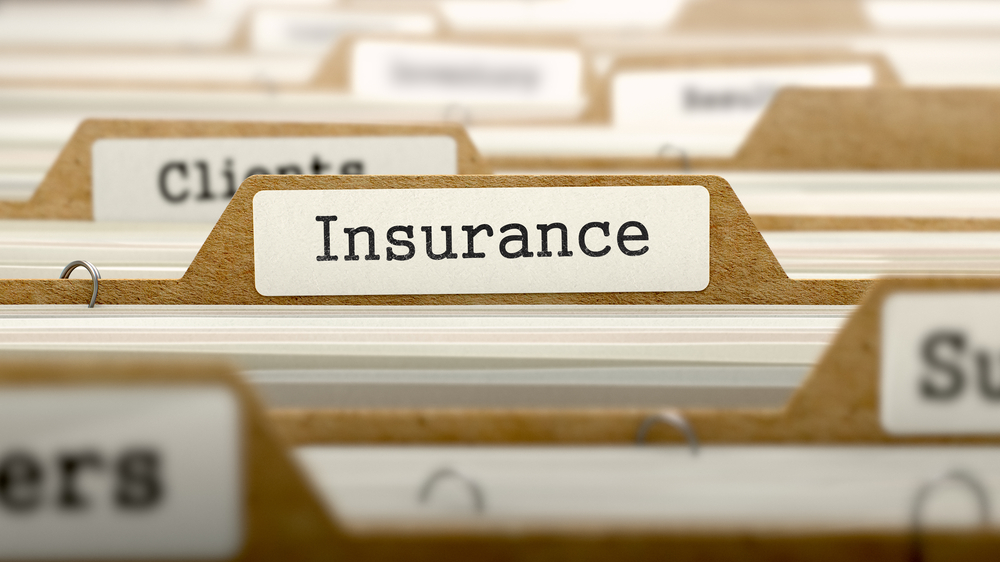What Does Pleasure Car Insurance Cover?
When you set out to get car insurance, you’re faced with a bewildering array of terms. One such term is pleasure car insurance. What does pleasure car insurance cover, and what factors will ultimately affect your rate?
Understanding Car Insurance Coverage Classes
Insurers typically offer four types of coverage: pleasure, commuting, business, and commercial.
Pleasure
Social only, or pleasure insurance, covers a car used only for “pleasure” and never (or only very rarely) for getting to and from work. This is what you would get if you only use your car for running to the store, taking the kids to school, or visiting friends.
Commuting
If you also use your car to get back and forth from work or to travel to and from a commuting hub, such as a railway station, your car is a pleasure and commuting car.
Business
This class of insurance is for you if your car is a necessary part of accomplishing your work. Whether you sell goods on the road or use it to move from worksite to worksite, your car needs business insurance to cover this.
Commercial
This coverage allows you to use your car to carry passengers or to give driving lessons. If you drive for Uber, for example, you would need this type of insurance.
Why Are Coverage Types Important to Know?
If you choose the wrong type of insurance, you might not be coveredin the event of an accident. For example, if you choose pleasure car insurance and then have an accident on the way to work, the insurance company will immediately start investigating whether this was a one-time trip or a regular commute. If they find out you’ve been using the car to commute regularly, they may refuse to cover the accident and even end your coverage with them entirely. You may also find it difficult to get coverage with another insurer at this point.
Even worse, you may find yourself facing serious legal penalties for using your car outside of its coverage limits. If, for example, you have only pleasure insurance but regularly use your car for business, in an accident, you may be viewed as an uninsured driver. This means serious legal penalties from the state. This includes a hefty fine, and for repeat offenses, you will lose your license for three years.
What Exactly Does Pleasure Car Insurance Cover?
Pleasure car insurance will cover all the same things as any other type of car insurance. The exact details depend on the plan you buy and state requirements, but you can expect all types of car insurance to cover:
Liability
This is insurance against damage and injury you cause to another person. All states except New Hampshire require this coverage. This pays for medical expenses and for repair or replacement of another person’s car. Insurance typically covers up to $50,000 to repair or replace a car and $100,000 for injury per person for up to three persons. Any costs beyond this are up to the driver to pay personally. In Florida, the state minimum for liability insurance is $10,000, but this is unlikely to be enough to cover anything but the most minor accidents.
Personal Protection
Liability only covers other people. Your personal protection coverage pays part of your medical bills in the event of an accident. Your coverage may also provide lost wages in case you’re laid up for a while, depending on the plan you choose.
Collision and Comprehensive Coverage
If your vehicle is damaged, your insurance company will pay to have it fixed (minus a deductible) or replaced. This coverage will also protect you if your car is stolen or damaged in another way, such as by a storm or animal.
It’s important to remember that the insurance company will usually only pay for what your car is worth if it has to be replaced: i.e., for the Kelly Blue Book market price you could sell it for. Your car may be an irreplaceable lifeline to you, but if it’s an old, high-mileage junker, you won’t get much for it. If you have an old car that’s not worth much, don’t invest too much in your collision and comprehensive damage coverage when you choose a plan.
Uninsured and Underinsured Coverage
If someone else causes an accident and they aren’t covered by insurance, uninsured motorist coverage keeps you safe. This is especially important here in Florida, which has the nation’s highest percentage of uninsured motorists. If the other driver is underinsured, your benefits will start paying out to you once the other driver’s liability limits kick in, and their insurer stops paying.
You might be wondering if you can’t just sue an uninsured motorist for endangering others and violating the law. The answer is that you can try, but most uninsured motorists don’t carry insurance because they can’t afford it, meaning you are unlikely to benefit from a lawsuit.
What Makes Pleasure Car Insurance Different?
If pleasure car insurance covers all the same things as other types of insurance, what makes it different? The difference does not lie in how the car is covered but in what the car is used for. Insurers calculate that pleasure drivers are a lower risk than drivers who use their car for commuting or for business or commercial risk. Understanding car insurance rates involves understanding risk and how it is calculated.
Understanding Risk
Insurance is all about risk. The insured person pays relatively small amounts of money, and the insurance company promises to pay a substantial amount if the insured has an accident. Because the insurance company could be paying quite a lot, they must minimize their risk. Consider an example to illustrate this issue.
To get full car insurance and liability coverage, the average American driver at age 35 pays around $1,500 a year for coverage. In return, the insurance agency agrees to pay for that person’s car repairs or replacement, plus up to $100,000 for injuries to someone else, up to $300,000 for three separate injured parties, plus another $100,000 to cover the other driver’s car. The insurance company is potentially on the hook for $400,000 plus the cost of repairing the driver’s own car: possibly another $20,000.
It would take 280 years of paying $1,500 a year for that driver to actually pay the insurance company everything the insurer could potentially lose in a worst-case-scenario accident. This makes it important for the insurance company to minimize the risk they take and share it across all insured drivers.
Sharing Risk and Insurance Rates
Insurance works when many people share the risk. One person may pay $1,500 a year for 20 years and only have a single fender bender. Another may only have had coverage for three months and then have a catastrophic accident that runs to the limit of their coverage. There’s no way for anyone to know for certain, so to keep things as fair as possible while also minimizing risk, insurers set rates based on statistical risk.
Statistical Risks
Insurers consider statistics to discover what things make an accident more likely. They know that the more miles you drive, the greater the possibility of an accident. They also know that certain locations are more accident-prone than others. Certain types of cars are also more likely to be involved in an accident. Finally, certain types of drivers are more likely to have an expensive accident.
As both men and women age, they tend to become more mature and self-controlled, making it less likely they will have an accident. Consequently, insurance rates drop as a person ages, hitting their lowest point during middle age. Once a person reaches 75, prices start to rise again since age slows reaction times, making accidents statistically more likely again.
Insurance Rates and Pleasure Coverage
The fewer miles you drive, the lower the chance you will be involved in an accident. Since people who drive only for pleasure tend to drive the fewest miles, they are the least likely to be involved in an accident and thus enjoy the lowest rates.
While that’s true, though, it’s important to remember that a lot more goes into your rate calculation than just whether you use the car for business or pleasure:
Age and Sex
Men generally pay more than women, and drivers under the age of 25 typically pay the highest rates no matter what class of insurance they have. Male teen drivers pay the highest rates of all. Male drivers pay higher rates than female drivers since statistics show they are more likely to be involved in an accident, more likely to speed, less likely to be wearing a seatbelt, and more likely to get a DUI. According to the National Traffic Safety Administration, male drivers involved in fatal accidents are far more likely to have been speeding at the time than a female driver in the same situation.
Currently, there are a few states that forbid an insurer to use sex as a determining factor in setting car insurance rates, but in Florida, this is still an important consideration. While this can be frustrating for some drivers, it is important to remember that these calculations are made entirely on statistics and are in no way personal.
Marital Status
Believe it or not, marital status is important when it comes to setting your car insurance rate: but only if you’re young. A married 20-year-old person pays, on average, 21% less per year in car insurance than an unmarried person. This difference drops off considerably over the age of 25. Rates are lower for younger married people because marriage tends to make younger adults more careful and responsible, which usually makes them more careful drivers.
Driving Record
A person’s past driving record is seen as a predictor of the likelihood of a future car accident. A driver with a history of speeding tickets, car accidents, or DUIs will pay high rates and, in some cases, may not be able to get insurance at all. Fortunately, most insurers only look at about five years of driving data when making their decisions. A few youthful speeding tickets won’t affect pleasure car insurance rates for someone in their 30s.
Car Make and Model
“Safe” cars that are typically driven by moms and dads, like minivans, have the lowest rates. Cars that younger male drivers love tend to be the most expensive to insure. Since the insurer also commits to paying for repairs and replacement in the event of an accident, the more expensive the car to begin with, the more it will cost to insure. If a car comes with many safety features, the rate will be lower. If it comes with many luxury interior details that will be expensive to fix, such as teakwood panels, the rate will be higher.
Driving Location
Michigan has the highest average car insurance rates. Louisiana, Florida, Oklahoma, and Washington D.C. also have very high rates. The lowest rates are enjoyed in Maine, Wisconsin, Idaho, Iowa, and Virginia. For reference, Maine drivers pay an average rate of $845 a year, while here in Florida, the average driver pays $2,219.
These state-specific differences have to do with accident rates, population density, state laws about car insurance, crime rates, and rates of uninsured drivers on the road. In Florida, for example, we have high insurance rates for two reasons: the enormous rate of uninsured drivers (the highest in the nation), and the fact that the state attracts many high-risk drivers (students under 25 and retirees over 75). The reason Maine has the lowest rates is the lower population density, competition among car insurers, and the lowest percentage of uninsured drivers in the country.
Get the Best Car Insurance for You
If you need pleasure car insurance, visit Absolute Choice Insurance today. Absolute Choice can help you get the best quotes in Florida, no matter who you are or what you drive. Contact us today at:
South Florida Phone: 305-275-1777
Central Florida Phone: 407-344-4444
Website: www.absolutechoiceinsurance.com



